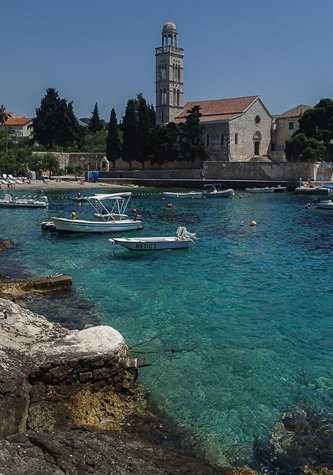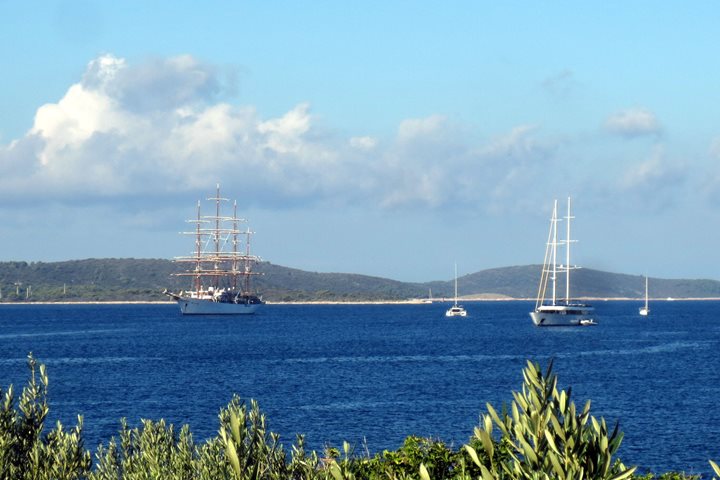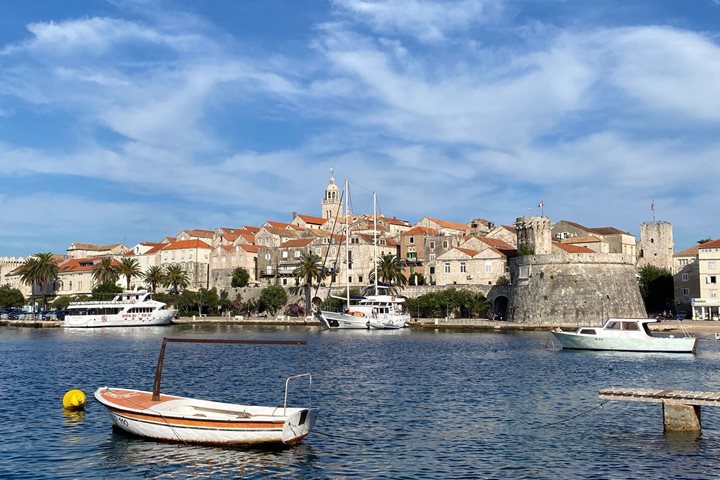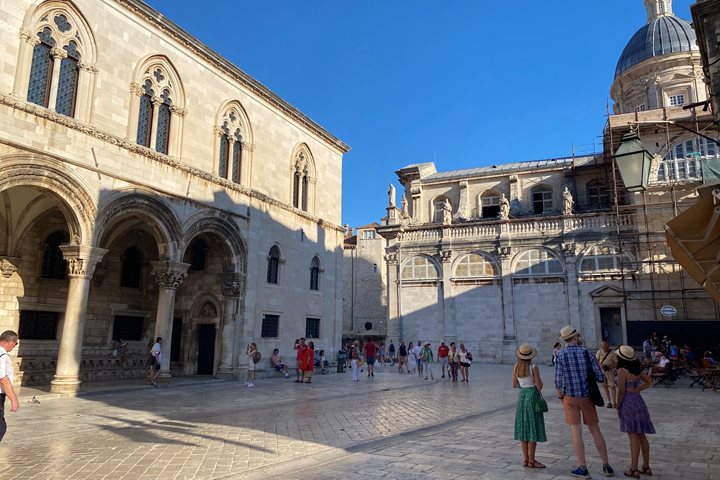The sun was up at 5:20 and the air was as still and the sea was a glass mirror. After breakfast Tom O’Brien gave an introduction to the sails on the Sea Cloud. The sails reflect the evolution of centuries of sailing and Tom took us through the yards, sheets, riggings, spars, widow makers, and the lot. We then had staff introductions followed by a scrumptious lunch with lots of local fresh produce and freshly caught fish.
We motored into the enchanted island of Hvar after lunch. The sun was shining brightly and the temperature was in the mid-80s but there was a cool afternoon breeze. Hvar is an ancient place. The present name of the island is derived from the Greek settlers who called it Pharos, the light. The Greeks settled here in the end of the 4th century B.C. The Romans followed the Greeks in the 2nd century and the Slavs came in the 8th century. The architecture of the present city of Hvar is, however, deeply indebted to the Venetians who ruled this entire Adriatic coast from the 13th century until the 18th century. The houses and Renaissance places are made of a luminous limestone.
Our first visit was to the 165h century still active Franciscan friary. The highlight of our trip there was to see the very fine painting of the Last Supper by Palma the Younger (1554-1621). It is the largest painting of the subject in Croatia (24’ x 6’) and covers one entire wall of the refectory. It is notable for its composition and the quality of the facial depictions, rumored to be based on the citizens of Hvar. We left the Friary and slowly walked into the main square of Hvar, a grand marble and limestone plaza modeled on the Italian style. It is fringed with delightful cafes and a number of us after our guided tour returned and had a seat and a cold drink.
Our guide then took us by the Arsenal. This is a building built by direct order of the Venetians. All their dependent states constructed arsenals. These were buildings designed to construct and outfit ships, both merchant and war. We then went to visit the Cathedral dedicated to St. Stephen. The present building is Baroque and was begun in the 16th century and took two centuries to complete. Consider that the city of Hvar in the 16th century had less than 4,000 inhabitants and yet they were willing to assume the not inconsiderable burden of building such a grand church. This was a period in European history when the ecclesiastical and the secular were mutually dependent. A church was a sign of a healthy community and a great church a sign of a thriving, prosperous, and blessed community.
We finished our 90-minute walk and had free time to explore. Some of us went for a delightful swim in the clearest and cleanest water of the Adriatic. Alberto took a group on a photographic walk honing their camera skills.
We returned to Sea Cloud for our welcome captain’s cocktail party and a wonderful gourmet dinner at 7:30. Our first full day together and it was smashing.









